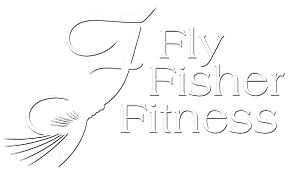Supplements Good Bad and Ugly

Supplements Good Bad and Ugly. It’s tough to get everything you need from food alone. Even if you buy organic, your blueberries probably came frozen from Chile, and your kale traveled farther than you did last summer. Supplements can help. But here’s the catch: they’re supposed to supplement your diet—not replace it.
The Good
People have been looking for health boosts forever. Ancient healers used ginseng and willow bark. In 1753, James Lind discovered citrus fruit could cure scurvy—and vitamin C became a supplement. That discovery led to daily allowance standards and fortified foods like milk, bread, cereal, and salt.
By the 1960s, supplements were commercialized. The mission was simple: prevent starvation, reduce disease, and build health. A noble goal.
Scientific American points to three supplements (with firm evidence for reducing inflammation as we age) that support that noble goal.
- Curcumin (the yellow in turmeric)
- Vitamin D
- Omega-3 fatty acids
The Bad
Supplements are a $40-billion industry—and a minefield. Real, raw food will always beat a capsule. But slick marketing convinces millions otherwise.
Here’s the dirty secret: supplements don’t go through the same approval process as drugs. Many people believe the FDA has their back. Wrong.
Take Prevagen, the jellyfish protein pill that promises sharper memory. The FTC and New York’s attorney general called it out for making bogus claims. Quincy Bioscience, the company behind it, settled a lawsuit in 2020. Did they quit aggressively marketing it? Nope. They slapped on a confusing disclaimer about “subgroups of individuals” and kept rolling. Consumers lost. The company won.
The Ugly
Here’s where it gets messy. After forty, your body doesn’t process protein like it used to. The result? Muscle loss—known as anabolic resistance. Many people turn to protein shakes and powders as the fix.
But studies show many of those shakes come laced with lead. Consumer Reports tested 23 popular protein powders and found, “Heavy metal contamination has become even more common among protein products, raising concerns that the risks are growing right alongside the industry itself.”
Ugly is an understatement.
Yes, trace amounts of lead exist naturally in soil and thus in spinach and carrots. But when you’re chugging powder every day, the risks stack up fast. Even cinnamon—yes, the stuff you sprinkle on oatmeal—has made the FDA’s list of lead-tainted foods.
So what’s the real danger? Headlines scream, lawsuits fly, companies deny, and consumers are left confused. One watchdog sets the “safe” limit lower than the FDA. Which do you trust?
The Takeaway
Supplements live in the gray zone: between food and medicine, between helpful and harmful.
Here’s the truth bomb:
- Supplements can help—a few do.
- Most are hype.
- Some are flat-out harmful.
Don’t swallow the marketing. Build discernment.
Because at the end of the day, the ugliest part of the supplement industry isn’t lead in your protein powder. It’s the illusion that you can take a pill and go on content and distracted.
No, is there more to lose than what you gain? There are ingredients of health and impediments to health. Engage, dig, learn, and experiment. Then choose wisely.
The bombardment of ambiguous headlines will continue. Discover what works for you. Build a track record, a vault of personal knowledge and experience that you can rely on without flinching.
Are you interested in joining a community of like-minded fly fishers and outdoor types who want to engage and discuss The Art of Aging?
Learn more…..Join us on Substack!
Categorized in: General Knowledge
